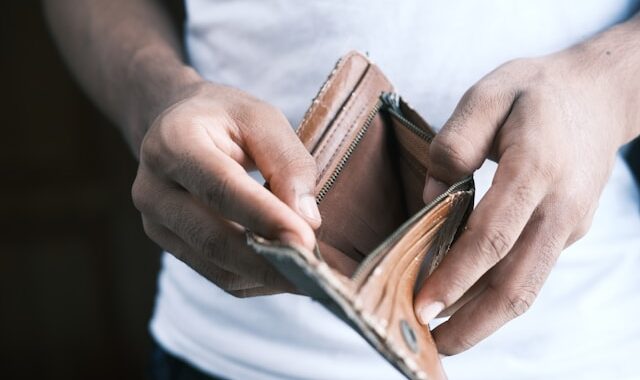Filing for a second bankruptcy in Canada is allowed under the Bankruptcy and Insolvency Act, but the rules and timelines are different than the first time. If you’ve already gone through the bankruptcy process and are struggling with debt again, it’s important to understand how a second filing works, what it means for your financial future, and what other options might be available.
Second Bankruptcies in Canada: Key Differences
The most significant change for second-time bankruptcies in Canada came in 2009, when updates to the Bankruptcy and Insolvency Act introduced longer timelines for discharge. Unlike a first bankruptcy—which can end in as little as nine months if there’s no surplus income—a second bankruptcy takes longer and has greater long-term impact.
If you don’t have surplus income, a second bankruptcy will last 24 months. If you do, it extends to 36 months. These changes were introduced to balance fairness for creditors and encourage individuals to explore alternatives before filing again.
A second bankruptcy will also remain on your credit report for 14 years after you are discharged, and when you file a second bankruptcy, the first bankruptcy will usually reappear on your credit report also.
Understanding Surplus Income
In Canada, the government sets income thresholds to define how much a person needs for reasonable living expenses. If your income exceeds that threshold by $200 or more in a given month, a portion of your earnings—usually 50% of the excess—must be paid into your bankruptcy estate.
This is referred to as surplus income. While it increases the monthly cost of bankruptcy, it also affects how long you stay in bankruptcy. The presence of surplus income increases the minimum period from 24 to 36 months in a second filing.
Discharge Timelines for Canada Bankruptcies
| Bankruptcy Filing | Without Surplus Income | With Surplus Income |
|---|---|---|
| First Bankruptcy | 9 months | 21 months |
| Second Bankruptcy | 24 months | 36 months |
These timelines are the minimum – your discharge may take longer if your trustee, the Office of the Superintendent of Bankruptcy (OSB), or a creditor objects or if you don’t complete your required duties during the bankruptcy (such as reporting your income each month, making payments, attending financial counselling sessions, and providing tax information).
What Happens If Your Discharge Is Opposed?
While not common, your Licensed Insolvency Trustee, the OSB, or a creditor can object to your discharge. This might happen if they believe you haven’t completed your duties, you were not honest during the process, gambling played a major role in your debt, or you’ve previously misused the bankruptcy system.
It is also more likely if you have a large debt to CRA, or a personal creditor such as a former spouse or business partner.
In these cases, a court hearing must be scheduled, and the judge can delay or impose conditions on your discharge
Third-Time Bankruptcies: What’s Different?
While this article focuses on second bankruptcies in Canada, it’s worth understanding what happens if a third bankruptcy is filed. Third-time bankruptcies are subject to a mandatory court hearing—no automatic discharge is available.
At the hearing, the judge may:
- Delay the discharge
- Attach conditions
- Refuse the discharge altogether
Because of the added complexity, trustees usually recommend other solutions, especially before a third filing.
Can a Consumer Proposal Be a Better Option?
For many people, a consumer proposal may be a more flexible and less damaging alternative than a second bankruptcy. If you’ve been discharged from your first bankruptcy, you may still be eligible to file a proposal for new debts.
A consumer proposal:
- Offers fixed monthly payments regardless of income changes
- Lets you keep assets like your vehicle and RRSPs
- Carries a shorter impact on your credit report (maximum six years from filing)
- Is legally binding on all creditors once accepted by the majority
Because surplus income does not apply, you won’t be penalized for earning more money during the term of the proposal.
Example Scenarios
How Long Does a Second Bankruptcy Stay on Your Credit Report?
Credit bureaus in Canada report bankruptcies differently based on how many times you’ve filed:
First bankruptcy: Removed 6 years after discharge
Second bankruptcy: Remains for 14 years after discharge
This extended reporting period can make it harder to access credit, get approved for rentals, or qualify for favorable rates on loans and credit cards.
Should You File a Second Bankruptcy?
Filing for bankruptcy more than once doesn’t mean you’ve failed—it often reflects life circumstances beyond your control, such as job loss, illness, or family emergencies. The key is to understand your options and get expert advice to avoid long-term consequences wherever possible.
A second bankruptcy may be appropriate if you’ve already tried other debt relief solutions, you cannot meet minimum payments or you’re at risk of wage garnishment or legal action.
A consumer proposal or another solution may offer more flexibility and a gentler recovery path.
Talk to a Licensed Insolvency Trustee Today
Second-time bankruptcies in Canada involve longer timelines, more responsibilities, and a bigger impact on your credit. But they can also offer relief, protection from creditors, and a new financial beginning.
At CSVan, our Licensed Insolvency Trustees will walk you through your options and help you decide if a second bankruptcy, consumer proposal, or another solution fits your situation best.
Book your free consultation today and take the first step toward a stronger financial future.
